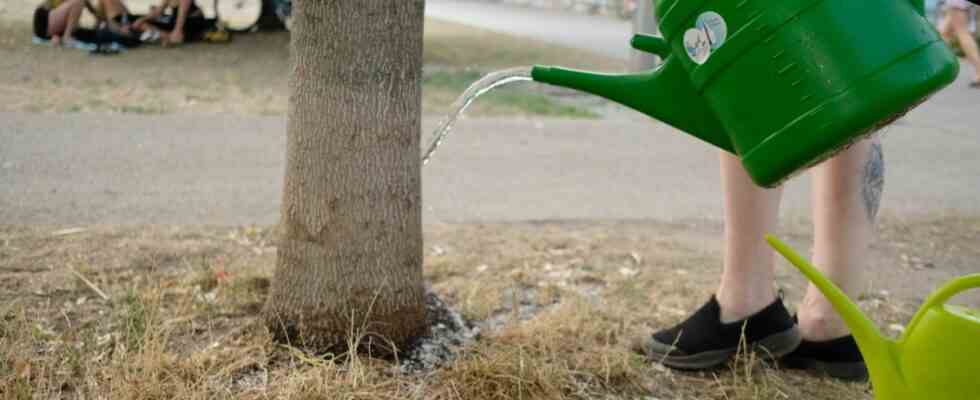It rained. In some places, quite a lot in a short time. But the basic problem remains that it is too dry. Especially the valuable greenery in the towns and densely built-up cities suffers. A statement from the Unterschleißheim city administration shows how explosive the situation is, which urgently calls for more to be done to protect the trees in particular. The measures taken so far were not sufficient to protect the trees, which are suffering from drought and are so valuable for the inner-city microclimate. The town hall has drawn up watering lists for public plantings, planting discounts and individual trees. In the Valentinspark, on streets and in green spaces, watering is in progress. Young trees in particular are supported in this way during the growth phase. But the number of trees cared for in this way is just over a hundred. The staff is by no means able to water the 8,000 city trees regularly.
In many places in the district it has been observed in the past few weeks that many things can no longer be maintained without artificial irrigation. Trees were provided with water bags. Municipal and municipal utilities as well as farmers are on the road with tankers to water many of the trees that have obviously been damaged by the drought. The message of the detailed assessment that the town hall in Unterschleißheim is now drawing is clear between the lines and also clearly formulated: Nobody should underestimate the dimension of the problem. The Greens in the city council had put the topic on the agenda with a request.
The basically lush greenery in Valentinspark is currently suffering from a lack of water.
(Photo: Steven Ahlrep/City of Unterschleißheim)
According to the town hall, green planning is reaching its limits in many cities, including Unterschleißheim. Legally binding development plans with their specifications for planting often do not reflect the climatic conditions. The street space robs trees of root-penetrable areas. In addition, there are the climatic changes that can now be observed, with periods of dryness as early as spring and continuing into summer. Brief periods of heavy rainfall and strong winds weakened the entire tree population. In addition, there is a growing susceptibility to pests and diseases and falling groundwater levels. “This trend will continue and not only makes it more difficult for new plantings to succeed, but also puts a strain on existing trees and shrubs, especially flat-rooted ones, when it comes to the water supply.”
According to the experts in the Unterschleißheim town hall, this is “in diametrical contradiction to the importance that inner-city vegetation has for the quality of life of people in cities”. Therefore new paths had to be explored. More attention must be paid to the fact that mature trees, which are of great importance for the inner-city climate, are lost for a generation if they are felled and replaced by new plants. The preference for native species when planting is no longer tenable, it is more important how stress-resistant plants are in drought. Roofs and facades would have to be greened more.
The report on inner-city greenery will be presented to the Unterschleißheim City Council holiday committee this Thursday, August 25th. No resolution is planned for this.

